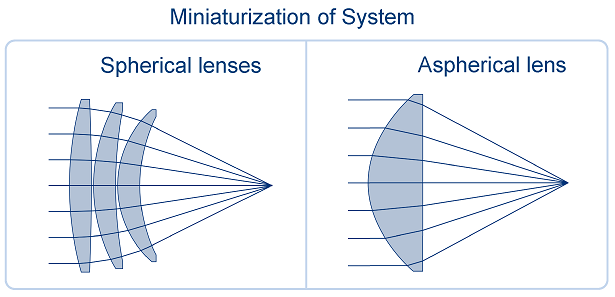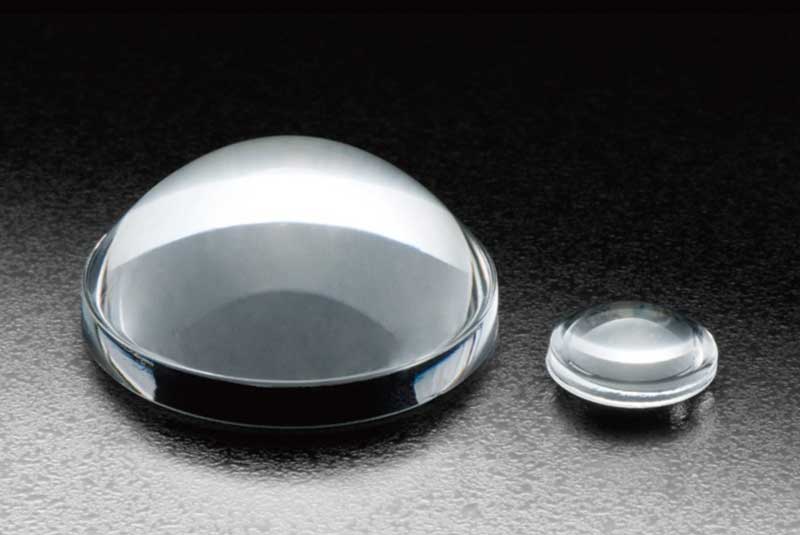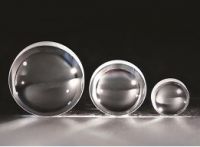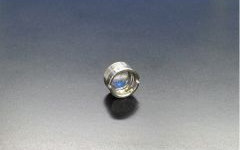Asphärische Linsen
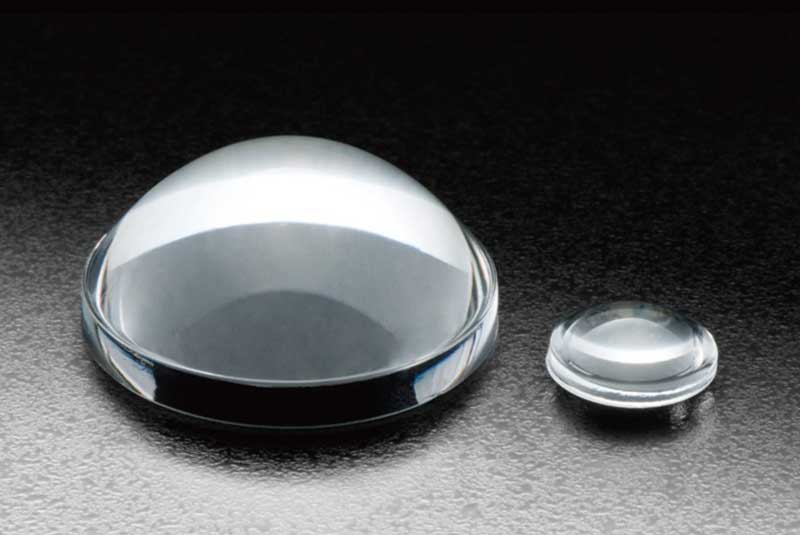
Asphärische Linsen werden entweder durch CNC-Bearbeitung oder durch Pressen unter Verwendung von Glas oder Kunststoff als Substrat hergestellt. Diese Linsen haben Oberflächenprofile wie Hyperboloid, Paraboloid, Azylinder oder andere Oberflächenprofile höherer Ordnung. Asphären werden normalerweise verwendet, um sphärische Aberration zu korrigieren oder die Anzahl der Elemente in einem Design zu vereinfachen oder beides. Wir fertigen auch Sonderanfertigungen, falls eines unserer vielen Standardlinsen nicht Ihren Anforderungen entspricht.
Advantages of Aspherical Lens Systems
ELIMINATION OF ABERRATIONS
With spherical imagining lenses, its single-radius profile leads to blurred, out-of-focus images because all of the light rays cannot meet at the focal point. This is known as aberration. Aspheric optics have one or more multi-radiused (aspherical) surfaces that deviate from the shape of a simple sphere. This complex profile allows the light rays to converge at one point and the spherical aberrations to be eliminated. Thanks to modern production technologies, we are able to manufacture aspheric lenses with highest precision even in series.
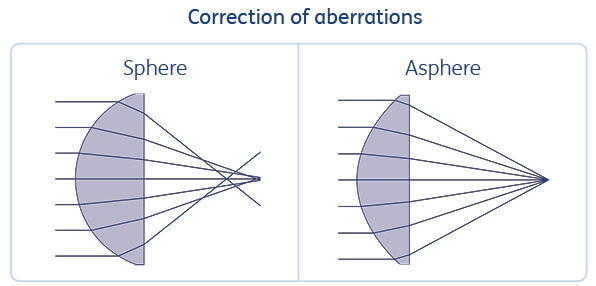
SMALLER, LIGHTER OPTICAL SYSTEMS
The use of aspheric lenses allows an optical system to be made both smaller and lighter. An application that requires several spherical lenses can sometimes be replaced by one aspheric lens. This is made possible because the lenses that would have to be used to correct spherical aberration can be eliminated so the entire system becomes more compact and the overall weight can be reduced. An illustrative example of the reduction of an optical system can be found in beam expansion. The monolithic beam expander consists of a single aspheric lens per element. Due to the afocal design, individual monolith beam expanders can be connected in series. This allows a high variance in the range of beam expansion. Compared with conventional Kepler and Galilean telescopes, the overall length is reduced by up to 50% while maintaining the same quality and magnification.
